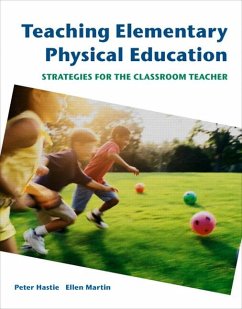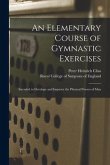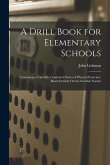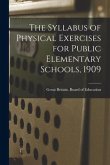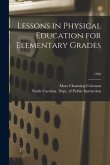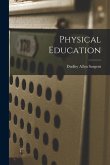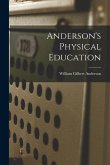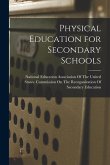Teaching Elementary Physical Education: Strategies for the Classroom Teacher gives elementary education teachers the tools and strategies they need to teach physical education using a skills-based approach. Designed for the non-physical education teacher, the textbook provides a shorter, more focused presentation of how and what to teach in physical education. For many elementary education students, this course is the only exposure they will have to teaching physical education. As such, Teaching Elementary Physical Education: Strategies for the Classroom Teacher builds a strong foundation in the subject, featuring just the right amount of coverage on key topics including safety, child development, developing a PE curriculum, assessment, management, and discipline. The text's skills-theme approach focuses on teaching broadly applicable movements, such as throwing and catching, instead of specific games.
Features + Benefits
Chapter Outlines at the start of each chapter give students an overview of the material and the sequence in which it is presented.
"Getting Started" questions open each chapter with thoughtful issues for students to consider.
Over to You questions challenge students to consider how they might successfully incorporate lessons from the textbook into their own classrooms.
Portfolio Tasks ask students to document learning for their portfolios, something many teacher education programs require students to produce as evidence of their learning and professional growth.
Progression Trees visually demonstrate how a skill is learned, from the most basic step to mastery.
Inquiring Minds encourage students to delve deeper into a subject by posing thoughtful questions that students can explore with a mentor, senior teacher, or peer.
"What's Wrong with this Picture?" questions describe a scenario in which a teacher has made a poor choice or behaved inappropriately. Students are asked to apply critical thinking skills to figure out what is wrong with the situation and how it can be corrected.
References provide students and instructors with resources for further information and study.
Glossary at the end of the book highlights and defines key terms from the text.
1. Introduction to Elementary Physical Education 2. Creating an Inclusive Learning Environment
3. Motor Skills to Children
4. The Daily Physical Education Lesson Plan
5. Strategies for Instruction
6. Strategies for Assessing Student Work
7. Managing a Physical Education Class: Protocols, Rules, and Accountability Systems
8. Managing Equipment, Space, and Time
9. Strategies for Managing Behavior During a Physical Education Lesson
10. Creating a Physically Safe Learning Environment
11. Strategies for Teaching Locomotor and Nonlocomotor Skills
12. Strategies for Teaching Manipulative Skills
13. Strategies for Teaching Games 14. Strategies for Teaching Rhythmic Movement
15. Strategies for Promoting Physical Activity and Fitness
16. Strategies for Complementing Classroom Work
Hinweis: Dieser Artikel kann nur an eine deutsche Lieferadresse ausgeliefert werden.
Features + Benefits
Chapter Outlines at the start of each chapter give students an overview of the material and the sequence in which it is presented.
"Getting Started" questions open each chapter with thoughtful issues for students to consider.
Over to You questions challenge students to consider how they might successfully incorporate lessons from the textbook into their own classrooms.
Portfolio Tasks ask students to document learning for their portfolios, something many teacher education programs require students to produce as evidence of their learning and professional growth.
Progression Trees visually demonstrate how a skill is learned, from the most basic step to mastery.
Inquiring Minds encourage students to delve deeper into a subject by posing thoughtful questions that students can explore with a mentor, senior teacher, or peer.
"What's Wrong with this Picture?" questions describe a scenario in which a teacher has made a poor choice or behaved inappropriately. Students are asked to apply critical thinking skills to figure out what is wrong with the situation and how it can be corrected.
References provide students and instructors with resources for further information and study.
Glossary at the end of the book highlights and defines key terms from the text.
1. Introduction to Elementary Physical Education 2. Creating an Inclusive Learning Environment
3. Motor Skills to Children
4. The Daily Physical Education Lesson Plan
5. Strategies for Instruction
6. Strategies for Assessing Student Work
7. Managing a Physical Education Class: Protocols, Rules, and Accountability Systems
8. Managing Equipment, Space, and Time
9. Strategies for Managing Behavior During a Physical Education Lesson
10. Creating a Physically Safe Learning Environment
11. Strategies for Teaching Locomotor and Nonlocomotor Skills
12. Strategies for Teaching Manipulative Skills
13. Strategies for Teaching Games 14. Strategies for Teaching Rhythmic Movement
15. Strategies for Promoting Physical Activity and Fitness
16. Strategies for Complementing Classroom Work
Hinweis: Dieser Artikel kann nur an eine deutsche Lieferadresse ausgeliefert werden.

